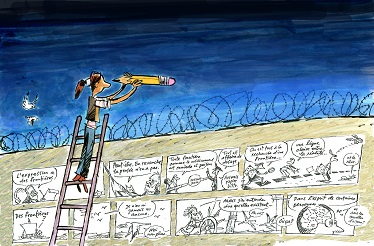Cut My Life Into Pieces: Alzheimer’s, Identity, and the Closure of Selfhood in Sarah Leavitt’s "Tangles: A Story of Alzheimer's, My Mother, And Me"
DOI:
https://doi.org/10.15167/1824-7482/pbfrm2024.2.2549Keywords:
Alzheimer, identity, memory, box, gutterAbstract
Neurodegenerative disorders like Alzheimer’s disease and their effects on the sufferer’s recollection of the world around them fundamentally reframes typical conceptions of identity and memory, and literary representation serves as a way to understand how the intersection of mind, body, and environment shapes selfhood. Sarah Leavitt’s graphic memoir, Tangles: A story about Alzheimer’s, My Mother, and Me uses the unique narrative techniques of the graphic medium to interrogate a longstanding conception of human identity – that selfhood is wholly the result of a functioning mind, and that an impaired mental archive deletes one’s identity. Instead, the text uses the story of Leavitt’s mother, Midge, to assert that identity is relational – it is formed when the mind and body suture together mental, physical, and environmental information into a cohesive worldview. In the same way that comic book closure finds its meaning in the blank spaces between panels, identity is formed from a gestalt of information that the process of emplotment helps compose.
References
AHMED, Sara. The Cultural Politics of Emotion. Edinburgh University Press, 2014.
DALMASO, Renata Lucena. “The Visual Metaphor of Disability in Sarah Leavitt’s Graphic Memoir Tangles: A Story about Alzheimer’s, My Mother, and Me.” Ilha Do Desterro A Journal of English Language, Literatures in English and Cultural Studies, vol. 68, no. 2, 2, Jan 2015, pp. 75–92.
DELEUZE, Gilles and Felix GUATTARI. “The Desiring-Machines.” Anti-Oedipus: Capitalism and Schizophrenia, Translated by Robert Hurley, Mark Seem and Helen R. Lane, University of Minnesota Press, 1983, pp. 1-50.
DE SAUSSURE, Ferdinand. “Course in General Linguistics.” The Norton Anthology of Theory of Criticism, 3rd Edition, Edited by William E. Cain et al., Norton & Company, 2018, pp. 824-840.
EL REFAIE, Elisabeth. Autobiographical Comics: Life Writing in Pictures. University Press of Mississippi, 2012.
GABORA, Liane M. “Conceptual Closure: How Memories Are Woven into an Interconnected Worldview.” Annals of the New York Academy of Sciences, vol. 901, no. 1, Jan. 2006, pp. 42–53.
HEERSMINK, Richard. “Preserving Narrative Identity for Dementia Patients: Embodiment, Active Environments, and Distributed Memory.” Neuroethics, vol. 15, no. 1, Apr 2022, pp. 1-16.
HIBDIGE, Dick. “From Culture to Hegemony.” Subculture: the meaning of style, Routledge, 1979, pp. 5-19.
ISER, Wolfgang. “Interaction between Text and Reader.” The Norton Anthology of Theory of Criticism, 3rd Edition, Edited by William E. Cain et al., Norton & Company, 2018, pp. 1452-1460.
JAMESON, Fredric. Postmodernism, or, The Cultural Logic of Late Capitalism. Duke University Press, 1991.
LEAVITT, Sarah. Tangles: A Story about Alzheimer’s, My Mother, and Me. Skyhorse Publishing, 2012.
MCCLOUD, Scott. Understanding Comics: The Invisible Art. HarperCollins Publishers, 1993.
PARLATI, Marilena. “Mixing Memory: Discovering and Narrating the Other Selves of Alzheimer’s.” Prose Studies, vol. 42, no. 1, 2021, pp. 53–67.
“What is Alzheimer’s Disease?” Alzheimer’s Association, https://www.alz.org/alzheimers-dementia/what-is-alzheimers.
Published
Issue
Section
License
Copyright (c) 2025 Alexander Jacobi

This work is licensed under a Creative Commons Attribution-NonCommercial 4.0 International License.


